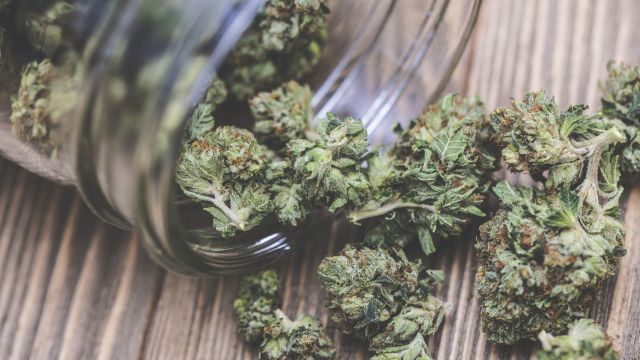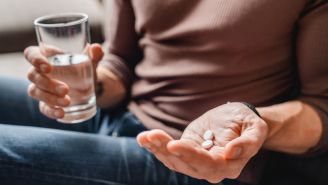According to the Centers for Disease Control and Prevention (CDC), about 115 Americans die daily from an overdose of opioids, a class of drugs that includes prescription opioids, heroin and fentanyl. More than 42,000 people died of an opioid overdose in 2016, and about 40 percent of those deaths included a prescribed opioid.
Used appropriately, prescription opioids are powerful painkillers. They are also highly addictive and dangerous. Opioids make you feel euphoric and change the way nerve cells work, creating a physical dependence. They also depress your respiratory system, which is what causes a fatal overdose.
Experts believe the liberal use of opioids to treat chronic, non-cancer pain has lead to the current public health crisis, and it's prompted an exploration as to whether medical marijuana (cannabis) might help reduce the number of opioid overdoses. Marijuana is believed by many patients to be an effective pain reliever, and is typically far less hazardous and addictive than opioids. “Cannabis, and cannabis-derived compounds, deserve further study as non-opioid treatments for chronic pain,” says Joshua D Lee, MD, MSc, an associate professor in the Department of Population Health at NYU Langone Health.
What is medical marijuana?
Marijuana comes from the Cannabis sativa or Cannabis indica plant, and in the United States, it's used more than any other illicit drug. Users inhale smoke, add it to foods (edibles) or use it in a vaporizer. The active ingredients enter the bloodstream and alter your senses, change your mood and impair your cognitive abilities. It's thought that between 9 and 30 percent of marijuana users may develop a disorder related to that use.
When people use marijuana for health issues, it's often to ease chronic or severe pain stemming from injuries and illnesses—and many find it to be effective. However, the Food and Drug Administration (FDA) has not approved marijuana as a medicine (though it has approved synthetic cannabinoids), and the US government classifies marijuana as a Schedule 1 drug, meaning it's illegal on a federal level. Still, a growing number of states allow it for medical purposes. Doctors can recommend it, and patients can pick it up at a dispensary or grow it at home.
How medical marijuana could curb opioid use
Chronic pain is common, and the number of people being prescribed opioids rose sharply in the 2000s. While prescription rates have fallen since then, many are still given the drugs to treat their pain. Several studies suggest that using marijuana to treat that pain—instead of opioids—might be linked to a lower rate of opioid overdoses and deaths.
For example, an analysis of death certificates between 1999 and 2010 found that states with medical cannabis laws had lower average rates of opioid overdose deaths. In another study, researchers looked at state-level hospitalization data between 1997 and 2014 and found significant reductions in opioid-related hospitalizations coinciding with the implementation of medical marijuana policies.
The potential problems
“There may be benefits [of using medical marijuana], but the research to date has been mostly observational, ecological and has important limitations,” says Lee. “Lower rates of overdoses, for instance, may have to do with factors other than cannabis reforms.” For example, he says, rates of fentanyl, street heroin and counterfeit opioid pills have varied widely state by state. Over the last five years, it's been fentanyl that has largely driven the acceleration of overdose death rates.
What's more, some research suggests medical marijuana may not be as effective as hoped, and may have certain drawbacks. According to the National Institute on Drug Abuse (NIDA), there is a lack of large clinical trials showing that the benefits of marijuana outweigh the risks. Some studies of people with chronic pain show that cannabis users don't lower their doses of opioids, either, compared to people who use opioids and don't use marijuana. And finally, other research shows using cannabis may actually increase the odds of non-prescription opioid use or addiction. That said, NIDA does accept that many studies show medical marijuana could play a role in opioid reduction.
Lee takes care to mention that any interventions which are safer and effective alternatives to chronic opioid pain treatments are urgently needed. "Medical marijuana (by prescription), cannabis-derived compounds (like cannabidiol), and casual recreational cannabis use may or may not prove to help," he says. "The studies to date have not yet adequately answered these questions.”






